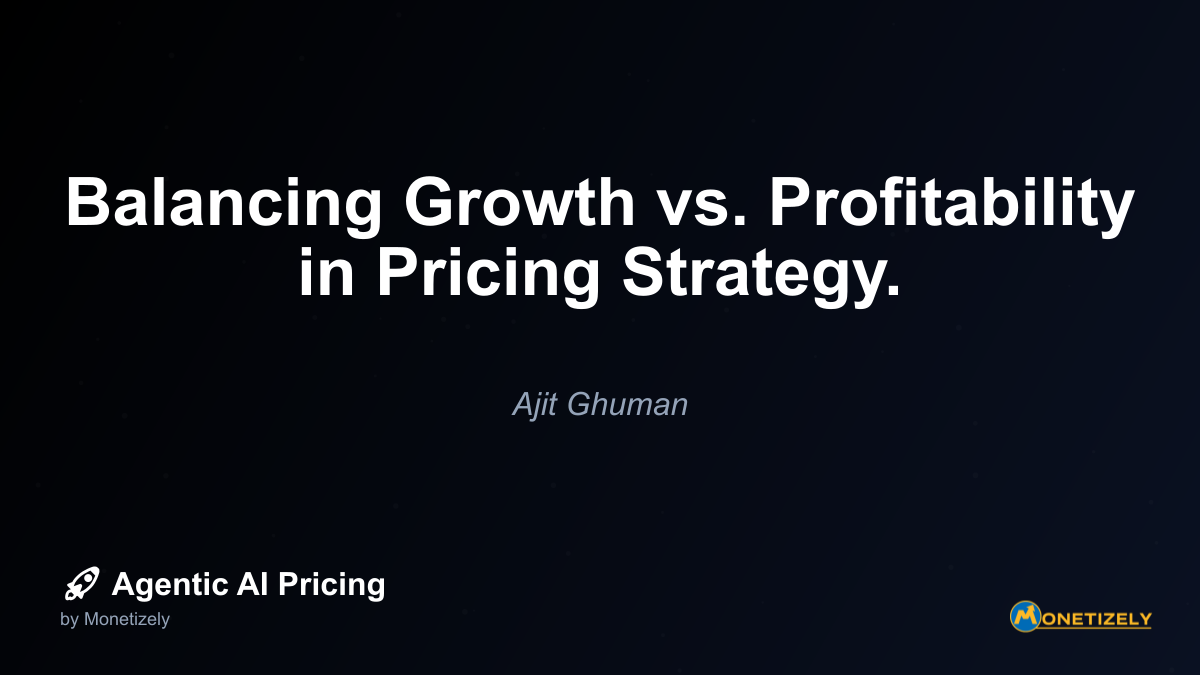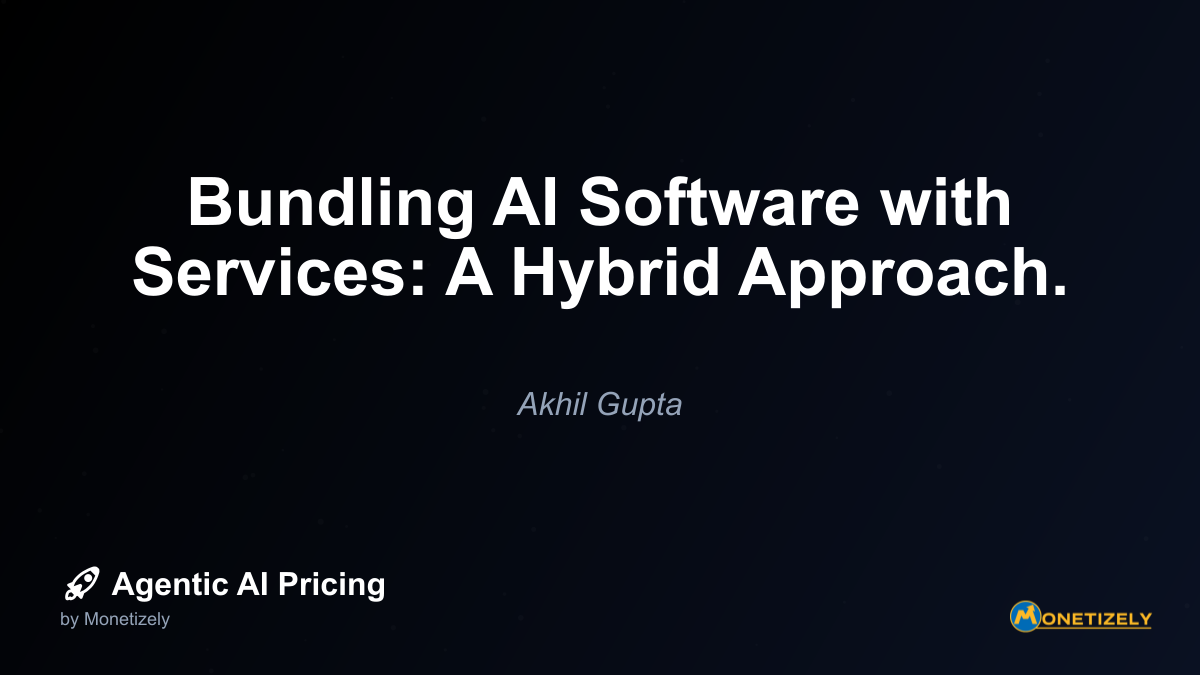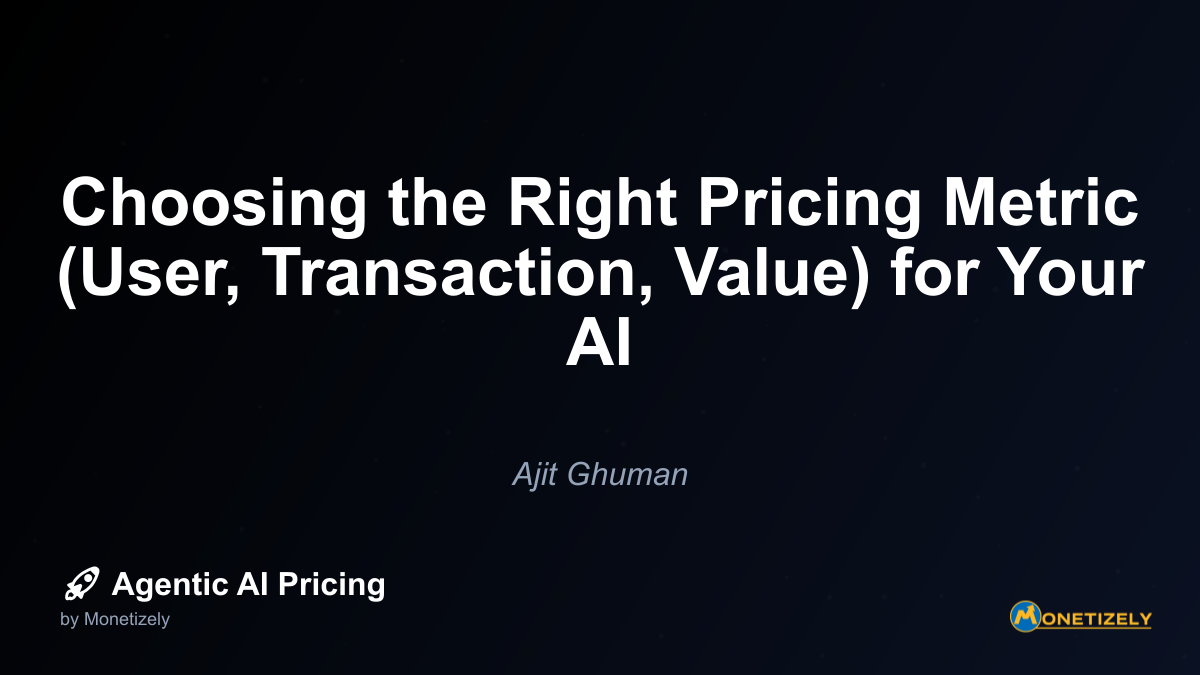· Akhil Gupta · Strategy & Planning · 5 min read
Pricing Strategy Reviews: Conducting Regular Pricing Audits.
AI and SaaS Pricing Masterclass
Learn the art of strategic pricing directly from industry experts. Our comprehensive course provides frameworks and methodologies for optimizing your pricing strategy in the evolving AI landscape. Earn a professional certification that can be imported directly to your LinkedIn profile.

Step 6: Develop Actionable Recommendations
Based on your analysis, formulate clear recommendations, such as:
- Adjusting specific pricing tiers
- Modifying your pricing model (e.g., from per-seat to usage-based)
- Revising discount policies
- Updating packaging or bundling strategies
- Implementing new pricing communication approaches
Prioritize recommendations based on potential impact and implementation difficulty. For each recommendation, outline:
- Expected benefits
- Implementation requirements
- Potential risks
- Success metrics
Step 7: Create an Implementation Roadmap
Develop a phased approach to implementing pricing changes, considering:
- Technical requirements for billing system adjustments
- Communication strategies for existing customers
- Training needs for sales and customer success teams
- Grandfathering policies for existing customers
- Testing approaches for new pricing structures
For agentic AI companies, implementation often requires particular attention to usage monitoring systems and clear communication about how value is measured.
Who Should Be Involved in Your Pricing Audit
A successful pricing audit requires input from multiple stakeholders:
Core Audit Team
- Pricing specialist or product manager: Leads the audit process
- Data analyst: Gathers and analyzes relevant metrics
- Finance representative: Provides margin and financial impact analysis
- Sales operations: Contributes sales performance data and field insights
Extended Contributors
- Sales leadership: Offers qualitative feedback on pricing effectiveness
- Customer success managers: Share voice-of-customer insights
- Product marketing: Provides competitive positioning context
- Executive sponsor: Ensures organizational alignment and resources
For smaller agentic AI companies, these roles may be combined, but each perspective remains important to capture.
Establishing a Regular Pricing Audit Cadence
The rapid evolution of agentic AI markets demands more frequent pricing reviews than traditional software categories. Consider implementing:
Quarterly Quick Reviews
Conduct lightweight quarterly assessments focusing on:
- Key performance metrics trending
- Significant competitive changes
- Sales feedback on current pricing effectiveness
- Customer acquisition and churn patterns
These quarterly check-ins should take no more than 1-2 days of concentrated effort but can identify early warning signs requiring attention.
Annual Comprehensive Audits
Once yearly, perform a thorough audit examining:
- Complete metric analysis across all dimensions
- Detailed competitive positioning assessment
- Comprehensive stakeholder interviews
- Strategic alignment with product roadmap and company objectives
This annual process typically requires 2-4 weeks and should result in a formal report with specific recommendations.
Event-Triggered Reviews
In addition to scheduled audits, initiate pricing reviews when:
- A major competitor significantly changes their pricing
- Your company launches transformative new capabilities
- Market conditions shift dramatically (e.g., economic downturn)
- Key metrics show sudden, significant changes
These event-triggered reviews ensure your pricing remains responsive to market dynamics.
Common Pricing Audit Pitfalls to Avoid
Even well-intentioned pricing audits can go astray. Watch for these common mistakes:
1. Focusing Exclusively on Competitive Matching
While competitive positioning matters, slavishly matching competitor pricing ignores your unique value proposition and cost structure. Your audit should consider competitive pricing as one input among many, not the sole determinant of your strategy.
2. Overemphasizing Short-Term Revenue Impact
Pricing changes that maximize immediate revenue might undermine long-term customer relationships or market position. Balance short-term gains against sustainable growth potential.
3. Neglecting Customer Segmentation
Different customer segments often respond differently to pricing structures. Analyzing metrics only in aggregate can obscure important insights about segment-specific price sensitivity.
4. Ignoring Implementation Complexity
Some pricing changes that look attractive on paper may prove prohibitively complex to implement given your current billing systems or customer contracts. Include technical feasibility in your evaluation.
5. Failing to Consider Customer Communication
How you communicate pricing changes can be as important as the changes themselves. Your audit should include recommendations for clear, value-focused communication strategies.
Case Study: How Regular Pricing Audits Transformed an AI Document Processing Company
Consider the experience of DocuMind AI, a mid-sized agentic AI company specializing in automated document processing. Their quarterly pricing audit revealed that while overall revenue was growing, their per-customer profitability was declining – particularly for enterprise clients.
The audit identified several key issues:
- Their per-document pricing model was leading to unpredictable costs for customers with high-volume needs
- Competitors had introduced tiered volume pricing with significant discounts for high-volume users
- Sales was routinely offering large custom discounts to win enterprise deals
- Customer feedback indicated frustration with unpredictable monthly costs
Based on these findings, DocuMind implemented several changes:
- Introduced volume-based pricing tiers with predictable monthly costs
- Created an annual commitment option with additional discounts
- Simplified their pricing page to clearly communicate value
- Trained their sales team on positioning the new pricing structure
Six months after implementation, DocuMind saw:
- 18% increase in enterprise deal close rates
- 12% reduction in custom discount requests
- 22% improvement in customer retention
- 15% increase in overall profit margin
This transformation wouldn’t have been possible without their systematic quarterly pricing review process.
Implementing Your First Pricing Audit: A Practical Starting Point
If you haven’t conducted formal pricing audits before, start with a simplified approach:
Gather basic metrics: Collect conversion rates, average deal size, discount frequency, and churn rates.
Interview key stakeholders: Talk to sales, customer success, and product teams about their pricing perceptions.
Review competitive positioning: Document how your pricing compares to 3-5 key competitors.
Identify obvious gaps: Look for glaring issues like frequent discounting or customer complaints.
Implement quick wins: Address the most obvious problems while building support for a more comprehensive audit process.
This initial audit will likely reveal enough insights to demonstrate the value of regular pricing reviews, building organizational support for a more structured approach.
Conclusion: Making Pricing Audits a Strategic Advantage
In the rapidly evolving agentic AI landscape, pricing strategy is too important to leave to chance or inertia. Regular, structured pricing audits provide the intelligence needed to ensure your pricing remains optimized for current market conditions.
By establishing a systematic audit process, involving cross-functional stakeholders, and acting on the resulting insights, you transform pricing from a static element to a dynamic competitive advantage. Each audit cycle creates an opportunity to better align your pricing with customer value perception, competitive positioning, and internal business objectives.
The most successful agentic AI companies don’t view pricing audits as a compliance exercise but as a strategic capability – one that continuously refines how they capture value in a rapidly evolving market. By embracing this approach, you position your company to maximize both customer satisfaction and financial performance, regardless of how the market evolves.
Remember that in agentic AI, where product capabilities, customer expectations, and competitive landscapes change rapidly, your pricing strategy’s shelf life is shorter than in traditional software categories. Regular audits aren’t just good practice – they’re an essential component of sustainable success.
Begin implementing your pricing audit framework today, and you’ll build a crucial capability for navigating the dynamic agentic AI landscape of tomorrow.
Co-Founder & COO
Akhil is an Engineering leader with over 16+ years of experience in building, managing and scaling web-scale, high throughput enterprise applications and teams. He has worked with and led technology teams at FabAlley, BuildSupply and Healthians. He is a graduate from Delhi College of Engineering and UC Berkeley certified CTO.
Pricing Strategy Audit
Let our experts analyze your current pricing strategy and identify opportunities for improvement. Our data-driven assessment will help you unlock untapped revenue potential and optimize your AI pricing approach.




